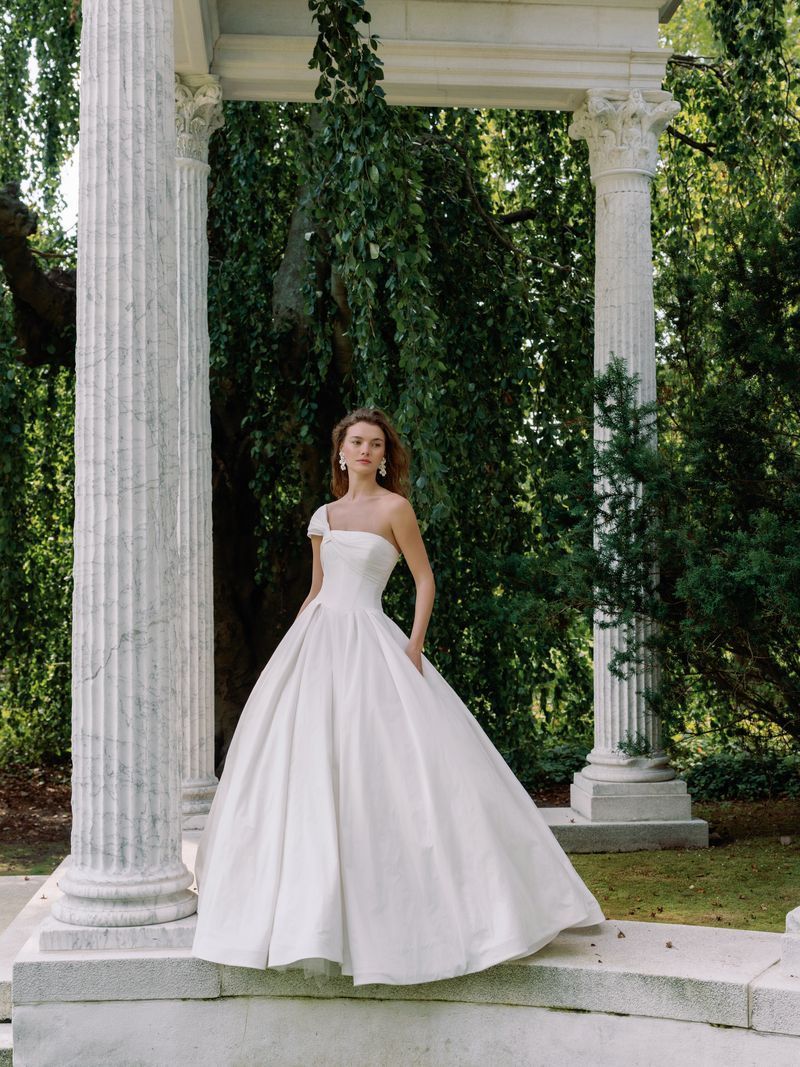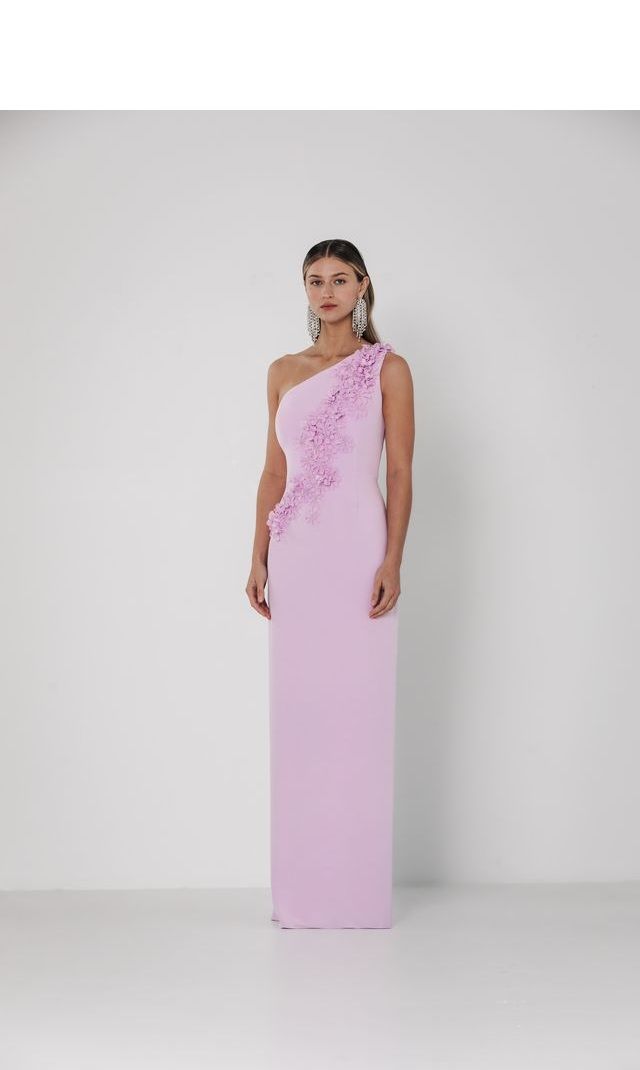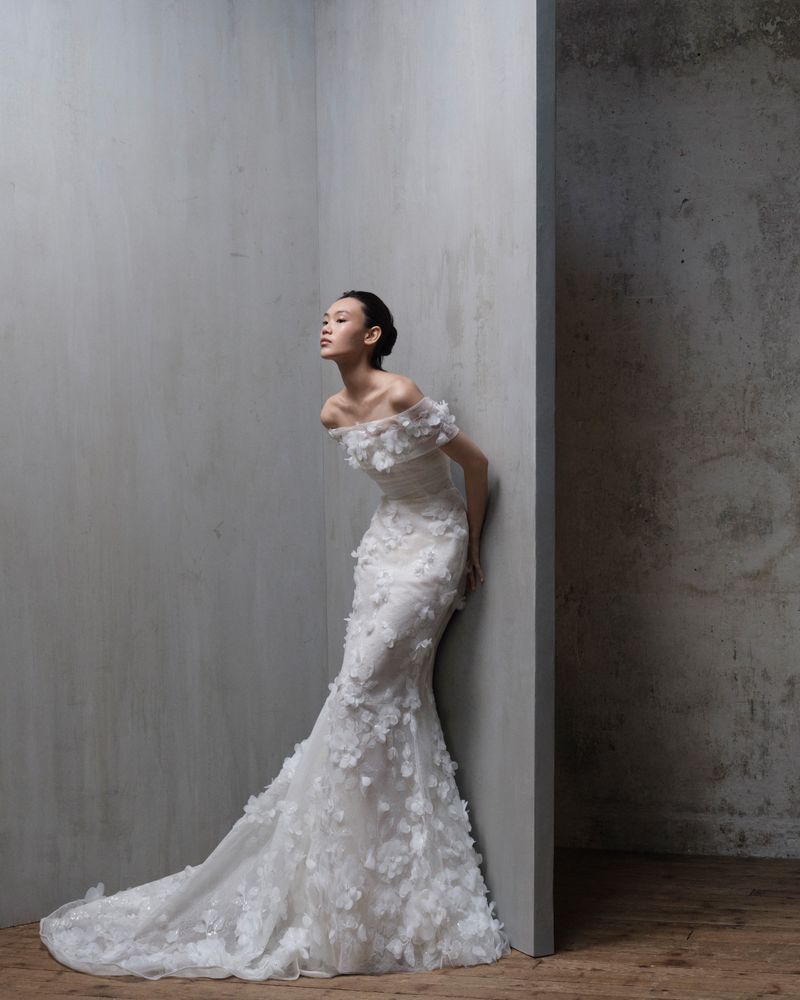Choosing the Right Veil Length: From Birdcage and Elbow to Blusher and Cathedra
A veil does more than complement your gown; it sets the tone for your bridal style. Choosing the right length enhances your silhouette and frames your face perfectly. Beyond aesthetics, a veil can influence how the overall bridal look is perceived, making it an essential accessory for adding sophistication, charm, or drama, depending on the design. Understanding veil lengths helps brides feel confident, ensuring every photograph captures the intended elegance.
Short and Sweet: Birdcage Veils
Birdcage veils are playful and chic, ending around the chin or nose. Ideal for vintage-inspired weddings, they create a polished, stylish statement without overwhelming the gown. Their compact size allows for ease of movement and pairs beautifully with shorter hairstyles or statement hairpieces. Brides who prefer a minimalist yet distinctive accent often select birdcage veils for a touch of retro charm. They are perfect for intimate ceremonies, offering just the right hint of coverage without obstructing facial features.
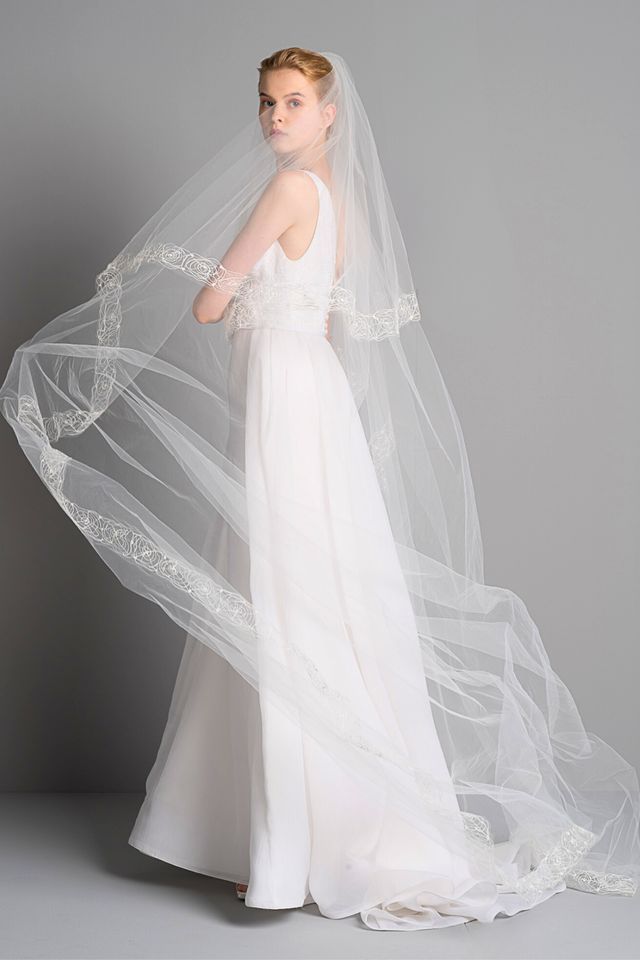
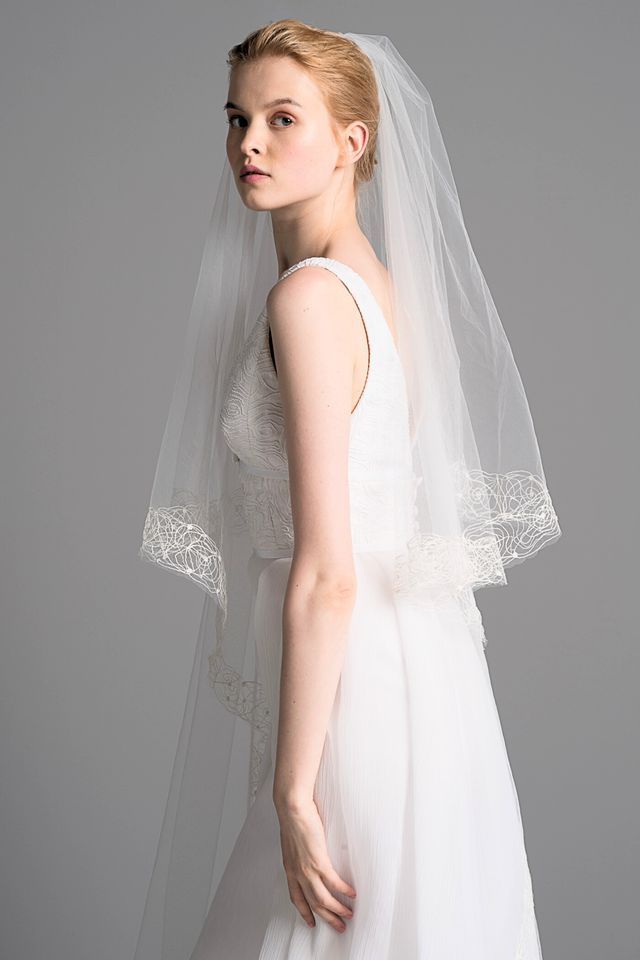
Romantic Mid-Length: Elbow Veils
Elbow-length veils hit at or just below the elbow, offering a harmonious balance. They pair beautifully with fitted or A-line dresses and add subtle elegance while keeping movement easy. These veils are especially versatile for brides who want coverage but prefer not to deal with longer lengths during reception activities. They work well with simple gowns as well as those with moderate embellishments, creating a polished look that enhances the gown’s design without overshadowing it.
Intimate and Timeless: Blusher Veils
Blusher veils drape over the face during the ceremony, lifting later for the reception. They provide a delicate, romantic frame for the bride and a nod to tradition. Blushers often pair with other veil lengths to create layered looks, adding depth and texture to bridal styling. This style is ideal for formal ceremonies where the unveiling moment adds emotional impact. Brides seeking a classic feel with a modern twist frequently choose blushers combined with fingertip or chapel-length veils.
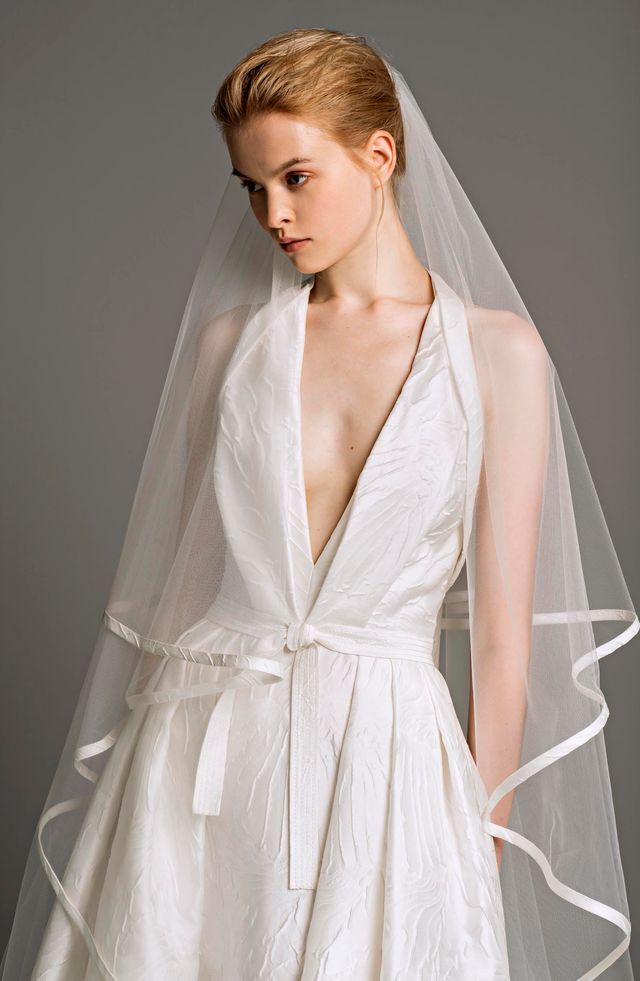
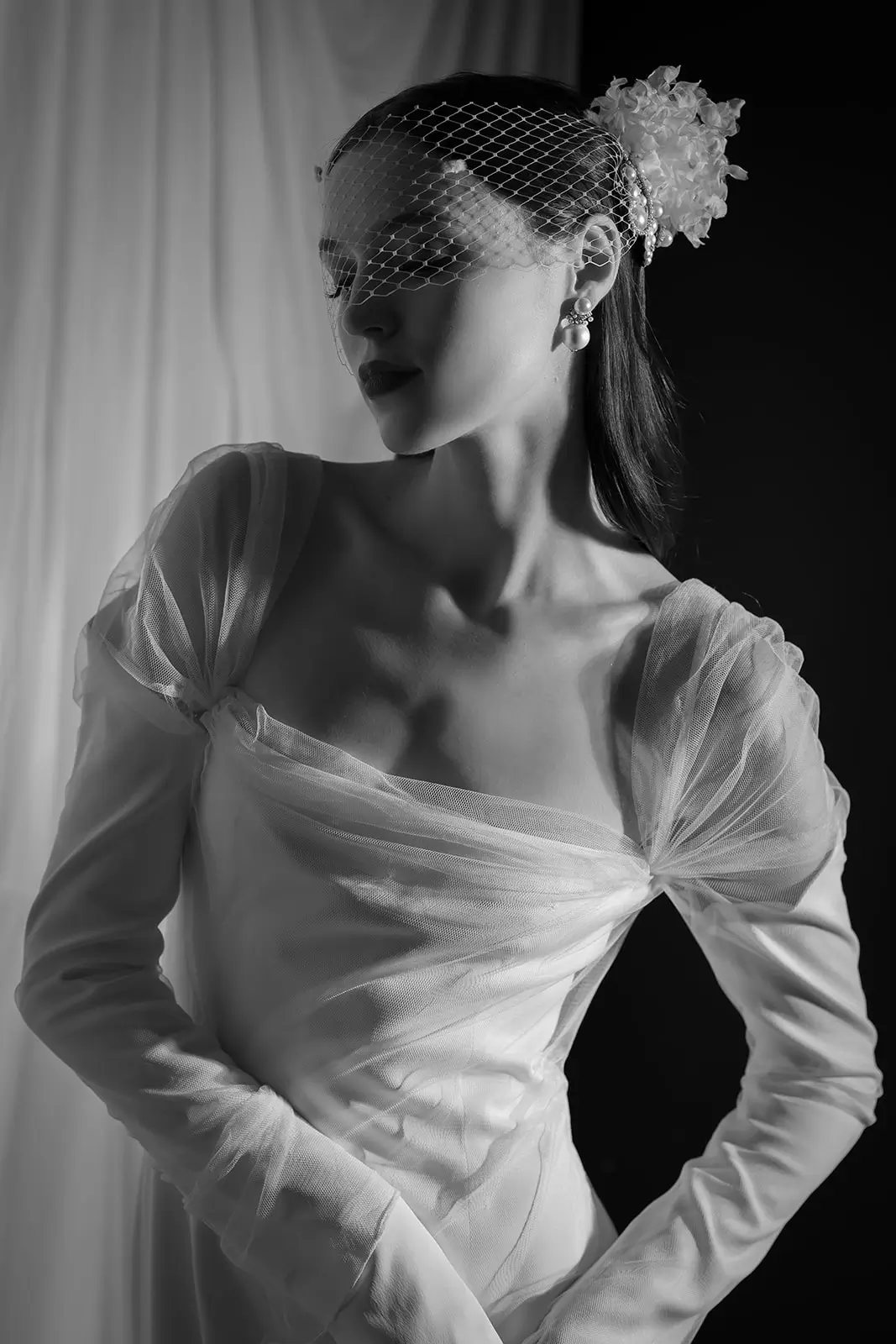
Graceful Touch: Fingertip Veils
Fingertip veils extend to the
bride’s
fingertips and deliver classic elegance. This versatile option works well with most gown silhouettes, giving grace without extra bulk. Fingertip veils are favored for their ease of handling while walking, dancing, or posing for photos. They offer a flattering proportion for medium-length dresses, making them one of the most popular choices for contemporary brides. The veil’s delicate drape complements gowns with moderate detailing, ensuring the bride looks balanced and refined.
Adding Drama: Chapel Veils
Chapel-length veils flow slightly past the dress’s train. They bring a sophisticated flair to the ceremony, creating dramatic movement and memorable photo moments. Brides selecting chapel veils often have formal venues with ample aisle space. This length adds grandeur without the full commitment of a cathedral veil, making it ideal for brides who want elegance with manageable mobility. Chapel veils can include lace trim, subtle beading, or light embroidery to accentuate the gown’s design elements while keeping the look cohesive.
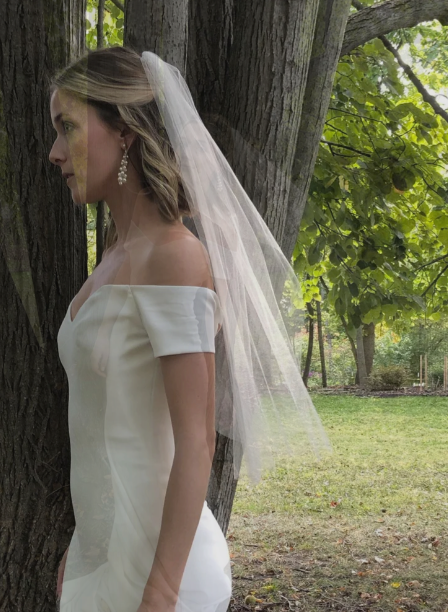
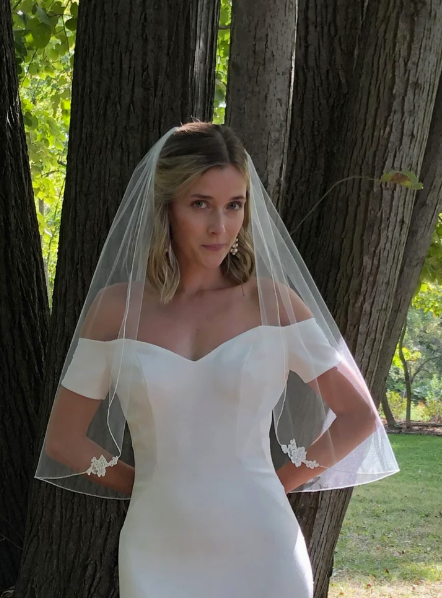
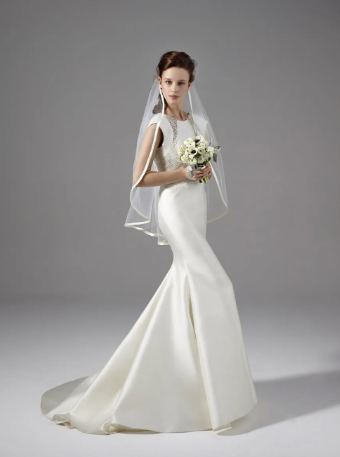
Statement Glamour: Cathedral Veils
Cathedral veils are long and dramatic, extending several feet behind the bride. Perfect for grand entrances, they make a powerful style statement for formal weddings. This length is ideal for gowns with long trains and is often chosen for religious or large-scale events where a lasting impression is desired. Cathedral veils offer opportunities for elaborate designs, including hand-stitched details, intricate lace, and layered tulle. While glamorous, they require careful handling and often the assistance of bridesmaids or attendants to maintain their flow during the ceremony and photos.
Choosing Fabric and Embellishments
The fabric determines how the veil moves and feels. Lightweight tulle and chiffon offer ease, while lace, embroidery, or beading add depth and personality. Selecting a material that complements the gown’s texture and weight ensures harmony. For instance, soft tulle pairs with flowing dresses, while structured gowns benefit from slightly stiffer fabrics that maintain shape. Embellishments should reflect the gown’s style without appearing overdone. Subtle touches like scattered crystals or lace edging can enhance elegance without drawing attention away from the dress.
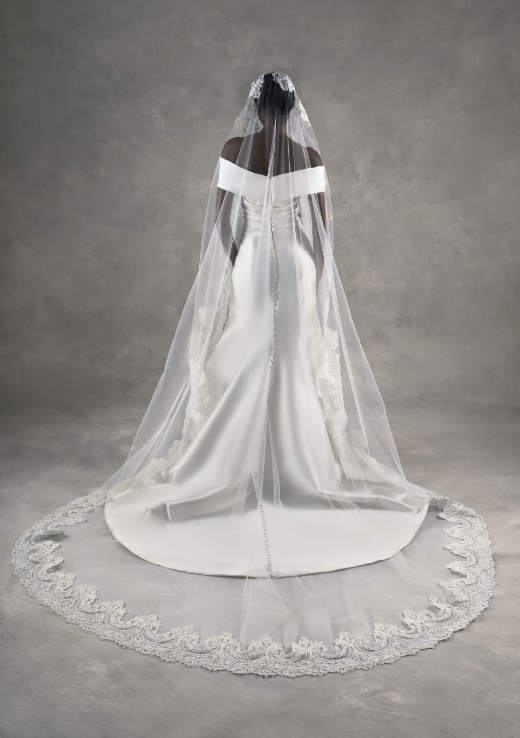
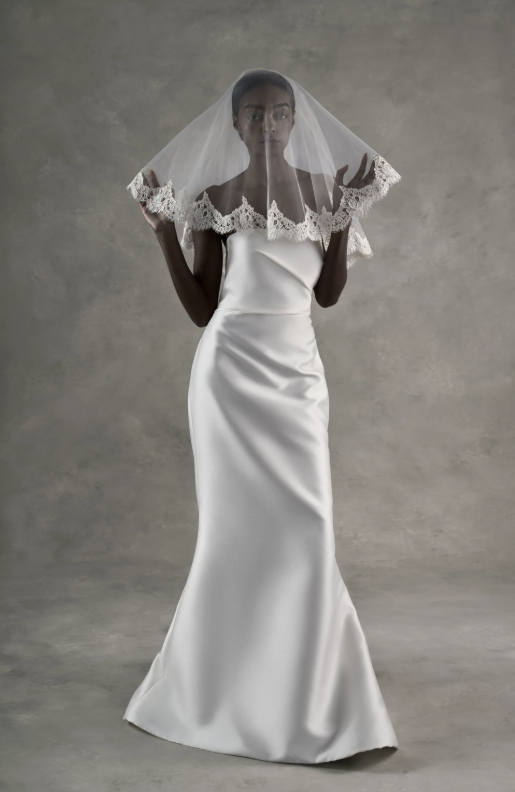
Pairing Veils with Gown Styles
Veil length should match the dress silhouette. Flowing gowns suit longer veils, while slim, fitted styles are complemented by shorter or mid-length options. Proper pairing ensures balance and elegance. For instance, A-line gowns harmonize with fingertip or chapel veils, while ball gowns often support cathedral veils for dramatic impact. Layering shorter veils with longer ones creates dimension, allowing brides to customize their appearance for both ceremony and reception. Matching veil style to gown neckline also enhances the overall cohesion of the bridal look.
Venue and Ceremony Considerations
The ceremony location affects veil practicality. Outdoor weddings favor lighter, shorter veils, while cathedral or formal venues allow for long, dramatic styles that wow the guests. Brides should consider floor surfaces, aisle width, and potential wind exposure when selecting length. Indoor venues with limited space are better suited for mid-length options that reduce risk of snagging or tripping. Additionally, reception activities like dancing may influence the choice of a removable or two-piece veil setup to maintain comfort throughout the day.
Comfort Meets Style
Veils should be beautiful yet easy to wear. Secure attachments, lightweight fabrics, and manageable lengths ensure comfort and confidence from the aisle to the reception. Consideration of hairstyle and hair accessories is essential for veil stability. Adjustable combs or pins help maintain placement without causing discomfort. Prioritizing comfort allows brides to enjoy every moment of their wedding day while maintaining elegance, without the distraction of readjusting or managing an unwieldy veil.
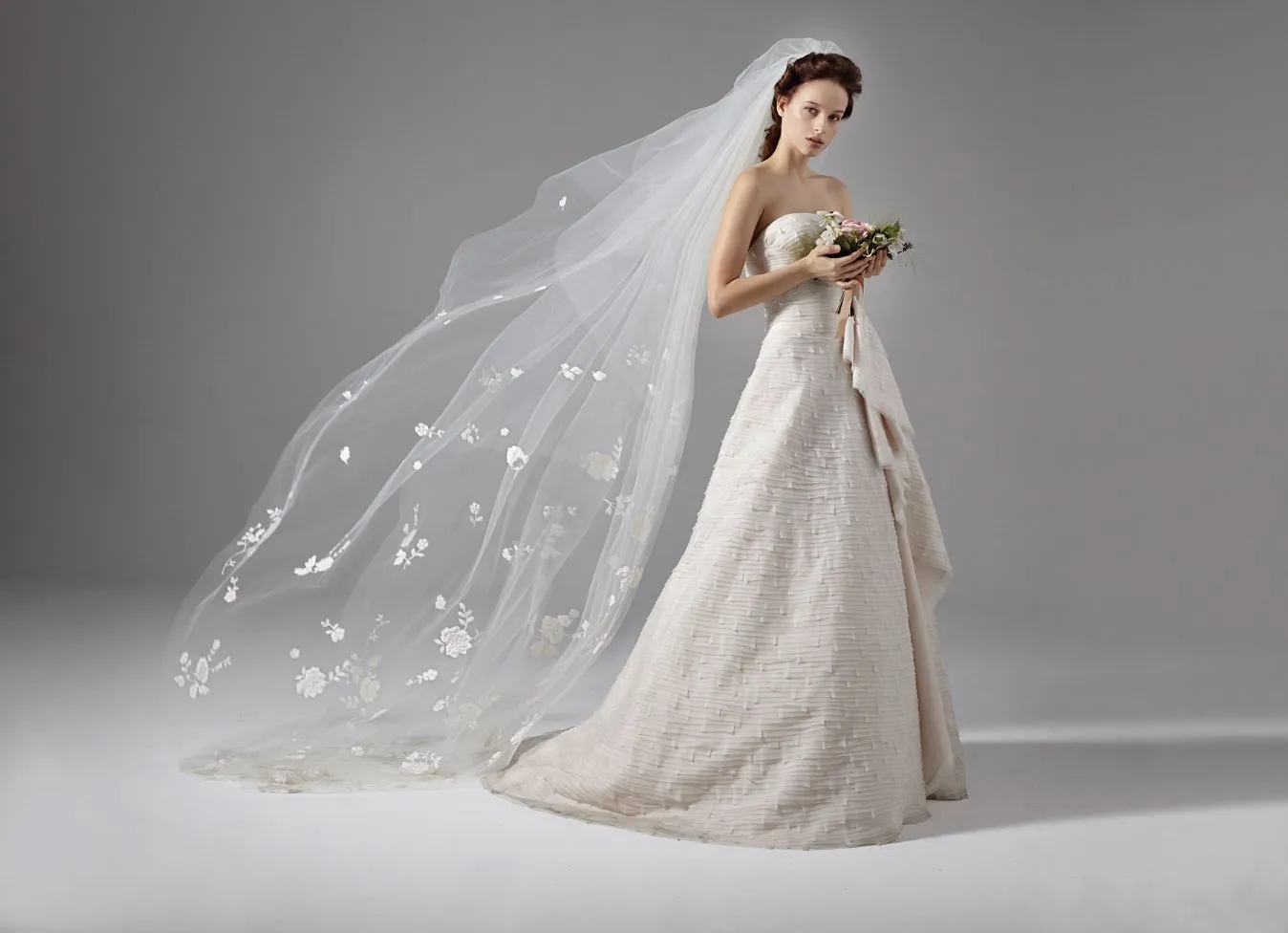
Ending Note:
At
L’elite Bridal, we help brides find a veil that reflects their personality and style. Our experts guide selections to harmonize with gowns and wedding settings, ensuring a flawless look from start to finish. We offer curated collections featuring a variety of lengths, fabrics, and embellishments to match diverse gown silhouettes. Our team assists brides in envisioning their complete look, creating options that enhance their natural beauty and complement the overall bridal theme. Schedule a consultation to explore our collection and experience personalized guidance that ensures the veil perfectly suits your wedding vision.
L’elite Bridal, 137 Newbury Street, Boston, and call us at 617.424.1010 for bridal or 617.424.1020 for occasions. Visit our website http://www.lelite.com to schedule your appointment today. We can’t wait to help you find the perfect gown and dress for your once-in-a-lifetime day!
FAQs:
1. What are the different types of wedding veils?
Wedding veils range from short birdcage and elbow lengths to blusher, fingertip, chapel, and cathedral, offering various styles and elegance levels.
2. How do I choose the right veil length for my dress?
Select a veil length that complements your gown silhouette, balancing proportion, movement, and overall bridal look.
3. Which veil is best for an outdoor wedding?
Shorter or mid-length veils work best outdoors, reducing wind interference and allowing ease of movement.
4. Can I layer multiple veils for my wedding?
Yes, layering shorter veils with longer ones adds dimension and versatility while enhancing both the ceremony and reception looks.
5. How do I ensure my veil stays secure all day?
Use combs, pins, or clips suitable for your hairstyle, and choose lightweight fabrics for comfort and stability.



